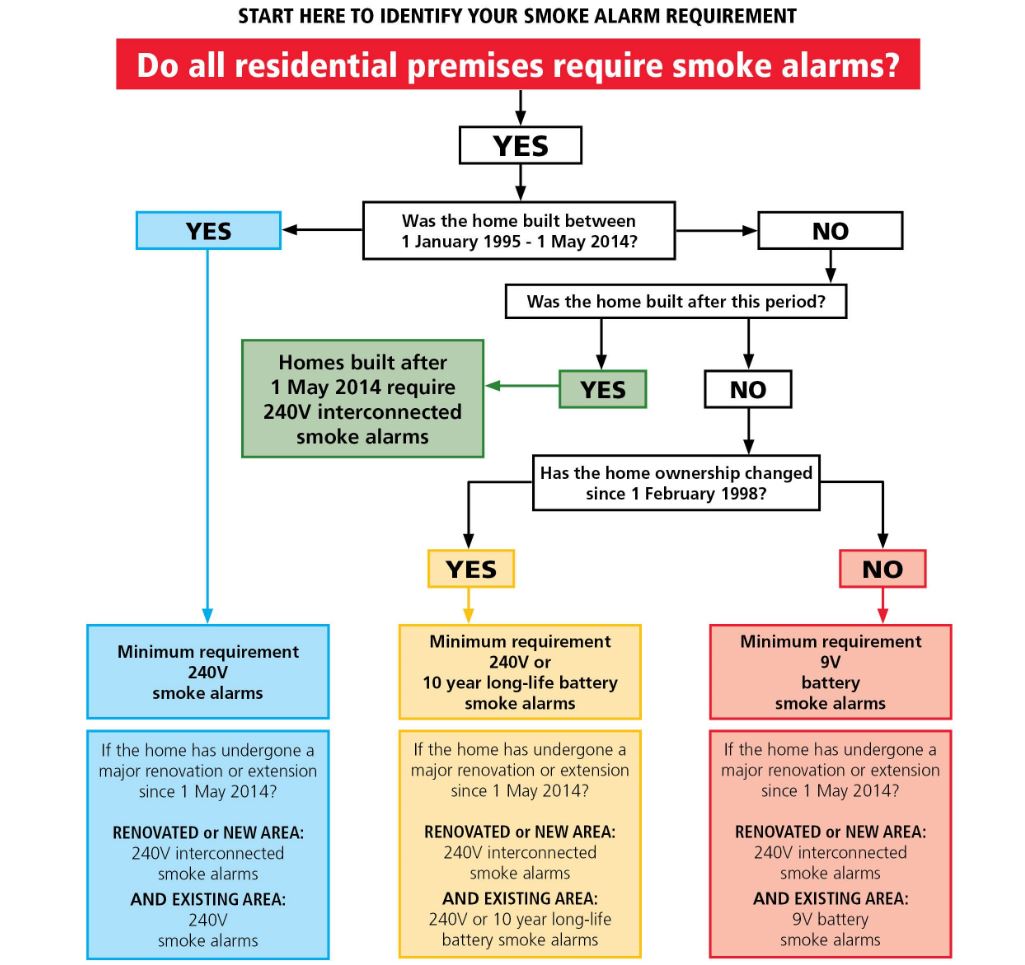Just like every other Australian state and territory, it is mandatory in South Australia for working Australian Standard 3786 compliant smoke alarms to be fitted into every home. Fines can be imposed if alarms are not installed, and in rental properties the onus is on landlords to ensure the smoke alarms are working.
Smoke Alarm Laws In South Australia
The governing legislation for smoke alarms in South Australia is the Planning Development and Infrastructure (General) Regulations 2017.
The Planning and Development Infrastructure (General) Regulations 2017 call out minimum requirements for smoke alarms in dwellings. To summarise, they state that smoke alarms must comply with the Building Code of Australia (BCA);
Smoke Alarms In Existing Homes Or Residential Properties Built Prior To 1 Jan 1995
A battery powered smoke alarm may be installed in these premises subject to any change of ownership conditions.
When an existing house built prior to 1995 is sold, the owner then has 6 months from the date of title transfer to install photoelectric smoke alarms which are either 240 volt hardwired or are a 10 year life non-removeable lithium battery fire alarm.
Smoke Alarms In New Houses Or Residential Properties Built After 1 Jan 1995
The Building Code of Australia requires 240v mains powered photoelectric smoke alarms.
Smoke Alarms In Houses Or Residential Properties Built After 1 May 2014
The Building Code of Australia requires 240v mains powered photoelectric interconnected smoke alarms.
South Australian Smoke Alarm Legislation
South Australian Smoke Alarm Legislation has evolved over the years and requirements vary depending upon the age of your home and when it was constructed. The below flowchart is provided courtesy of the South Australian Metropolitan Fire Service and may help you understand your smoke alarm requirements.


A direct link to the South Australian government website is posted below if you would like to read the full legislative document for yourself.
South Australian Planning, Development and Infrastructure (General) Regulations 2017

Want to know more? Watch our ZEN quick start video or call us on 0478 596 402 today
We love talking smoke alarms!
ZEN Photoelectric Smoke Alarms
New Farm, QLD, 4005

